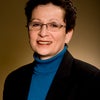No, the title is not the start of a joke. The actual headline from the Mombasa Daily Times (Mombasa, Kenya) in 1964 reads "Sylvia Sails Away with 70 Men, But She Expects No Problem." The reporter was obviously incredulous that marine biologist Dr. Sylvia Earle thought it wasn't an issue that she would be the only woman aboard a ship for six weeks studying the Indian Ocean -- and that all of her colleagues were men!
Being a woman pioneer in the STEM (science, technology, engineering, and mathematics) professions, as Dr. Sylvia Earle was, has often meant being the only or one of very few. On April 4, the National Women's Hall of Fame held a Conversation with Great Women with three women STEM pioneers including Dr. Earle at the McGeorge School of Law, University of the Pacific campus in Sacramento. All three pioneers described some of the obstacles they had encountered. Tellingly, all loved the work they did and encouraged women -- and men -- to follow in their footsteps. Let's learn about some of the pioneering women in the STEM fields.
Biochemist and Nobel Laureate Gerty Radnitz Cori and her husband Carl discovered how glucose is converted into glycogen. This discovery is critical to the understanding and treatment of diabetes. For this work, the Coris received the Nobel Prize in Physiology or Medicine in 1947. In addition, this process is now named the Cori Cycle in their honor. The later work that Cori did on enzymes and hormones laid the foundation for the treatment of defective genes. At one point in their careers, Carl Cori was told that working with his wife would hinder his career; he did not listen to this advice. Because of nepotism rules and discrimination, Gerty Cori was not named a full professor until the same year that she received the Nobel Prize. She was an amazing pioneer who persisted in spite of the many barriers that were placed in her way. Cori has been inducted into the National Women's Hall of Fame.
From biochemistry and diabetes we turn to mathematics, physics and computers. Mathematician and physicist Admiral Grace Murray Hopper made it possible for us humans to speak our language to our computers as she developed the software (the computer compiler -- 1952) that translates human languages into the zeroes and ones that computers understand. This means she made the personal computer, computer tablets and many things electronic possible. Hopper wrote the first English-based computer language, Flow-Matic, and she was instrumental in the development of the business language COBOL. Hopper loved to take credit for finding the first computer bug. It was a moth, stuck in the relays of the computer system at Harvard. She also loved to educate people about the speed at which computers worked -- and carried around a piece of wire 11.86 inches long -- a nanosecond. The piece of wire demonstrated how far light traveled in a billionth of a second; the speed at which computers work. The first individual woman to receive the National Medal of Technology (1991), Hopper has been inducted into the National Women's Hall of Fame.
From math and physics, we move to biology. Oceanographer and marine biologist Dr. Sylvia Earle is regarded as one of the world's leading advocates for safeguarding the seas. Earle had to battle discrimination throughout her career in addition to battling the hostile elements involved in deep sea exploration (temperatures and pressures). She has led over 50 expeditions worldwide including the first team of women aquanauts, a two-week exploration of the ocean floor. She has spent over 6,000 hours underwater in connection with her research. Earle set a record in 1979, when she walked untethered on the sea floor at a depth lower (1,250 feet) than anyone before or since has achieved. Earle has been inducted into the National Women's Hall of Fame.
From Biology and the oceans, we move to Astronomy, Physics and the heavens. Infrared astronomer Dr. Judy Pipher was the first woman to work in the field of infrared and submillimeter astronomy, pursuing brand new research into ultra sensitive light detection of celestial bodies. In 1983, she and her colleagues were able to take the first telescopic infrared pictures of starburst galaxies. Pipher designed aspects of the NASA Spitzer Space Telescope, launched in 2003, which includes infrared detector arrays being using to study distant universes and clusters of forming stars and brown dwarfs. She has been inducted into the National Women's Hall of Fame.
As an electrical engineer, I stand on the shoulder of these great STEM women, many of whom are profiled in the book Her Story: A Timeline of the Women Who Changed America. I thank them for being the pioneers who paved the way for me.
